In this article series, I compare Final Fantasy Adventure’s translation with the original Japanese script. For project details and/or to start from Part 1, see here.
Part 4: Dime Tower to Ending
This section of the game covers the last two days of the live stream. Naturally, it involved a lot of exploring and boss battles, but it also featured some of the most important scenes in the game.
The article below covers a handful of noteworthy translation changes, but the videos above cover many more. If you’re a fan of the game, check it out for more details!
Robot Friend
Inside an old tower, you encounter a robot that was designed to explore ancient ruins. It also turns out it’s been stuck inside the ruins for the past fifty years.

In Japanese, the robot is called the マミーシーカー (mamī shīkā, "Mummy Seeker"), or just “Māshī” for short.
In the English version, “Māshī” was transliterated as “Marcie”. This would be a reasonable translation choice if you had no context to work with, but the robot’s name is literally explained in the Japanese text:
| Japanese Version (basic translation) | English Translation |
| I am Mamī Shīkā, a ruins exploration robot. Everyone just calls me Māshī. | I AM MARCIE. I SEARCH RELICS. |
Basically, the original meaning behind the robot’s name was lost in translation – now it’s just a random name.
It’s just a minor difference compared to everything else, of course, but the English version cuts out the fact that the robot apparently used to associate with lots of people, enough that those people even gave it a nickname.
Birds & Kimonos
There’s a surprisingly wide variety of enemies in Seiken Densetsu/Final Fantasy Adventure, although very few of them are named in the game itself. Luckily, the official Japanese guides list the details for every enemy.
One interesting enemy is this gruff-looking, robe-wearing bird:

The Japanese guide says this enemy is called ガラシャ (garasha). I remember seeing enemies called “Garasha” in other games, but I never really knew what this name signified, if anything.
After looking at Japanese fan sites, it seems there isn’t a clear reason for the name, but fans theorize that the name is in reference to Hosokawa Gracia, a famous woman from Japanese history.
Still, why would this robed bird enemy be named after her? I don’t really have a clear answer myself, but one famous story about Hosokawa Gracia is that she once wore the same blood-soaked kimono for days out of protest. Maybe that’s the connection? It feels like a stretch, but I can’t think of any other connection between her and this enemy.
Incidentally, a robe-wearing bird enemy named “Garasha” appears in this game’s sequel too. As we can see, it was renamed the “Kimono Bird” in the English version:
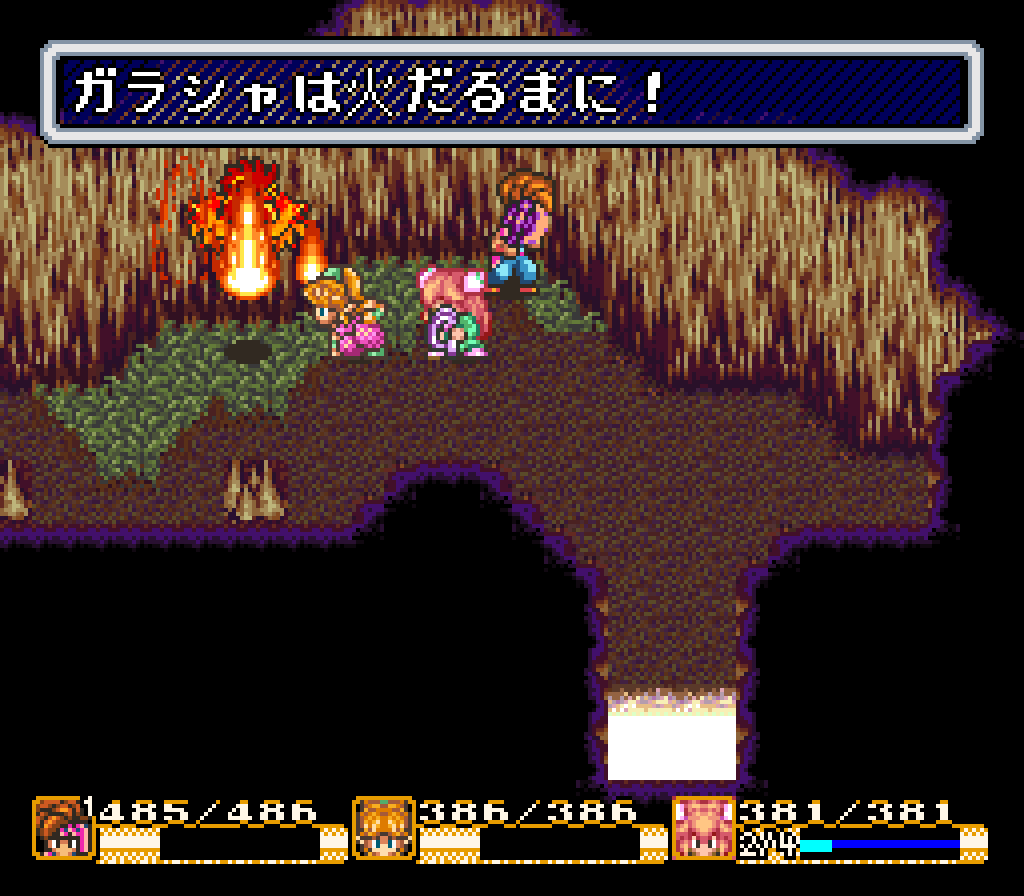 | 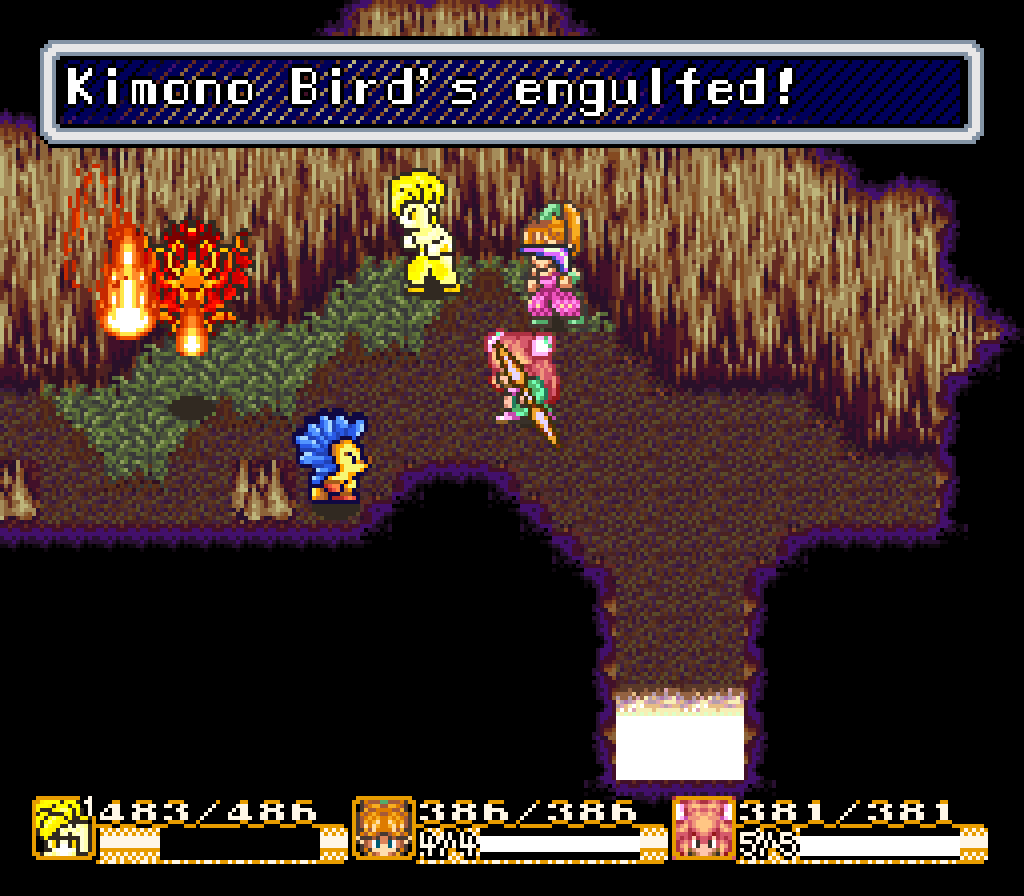 |
| Seiken Densetsu 2 (Super Famicom) | Secret of Mana (Super NES) |
If anyone has any information or insight into this “Garasha” name, please let me know!
Genji Equipment
The Final Fantasy games often include powerful “Genji” items that you can equip. Since this game is a spin-off of the Final Fantasy series, it’s natural to see Genji equipment here too. As we can see, though, “Genji” equipment was renamed “Samurai” equipment in the English version:
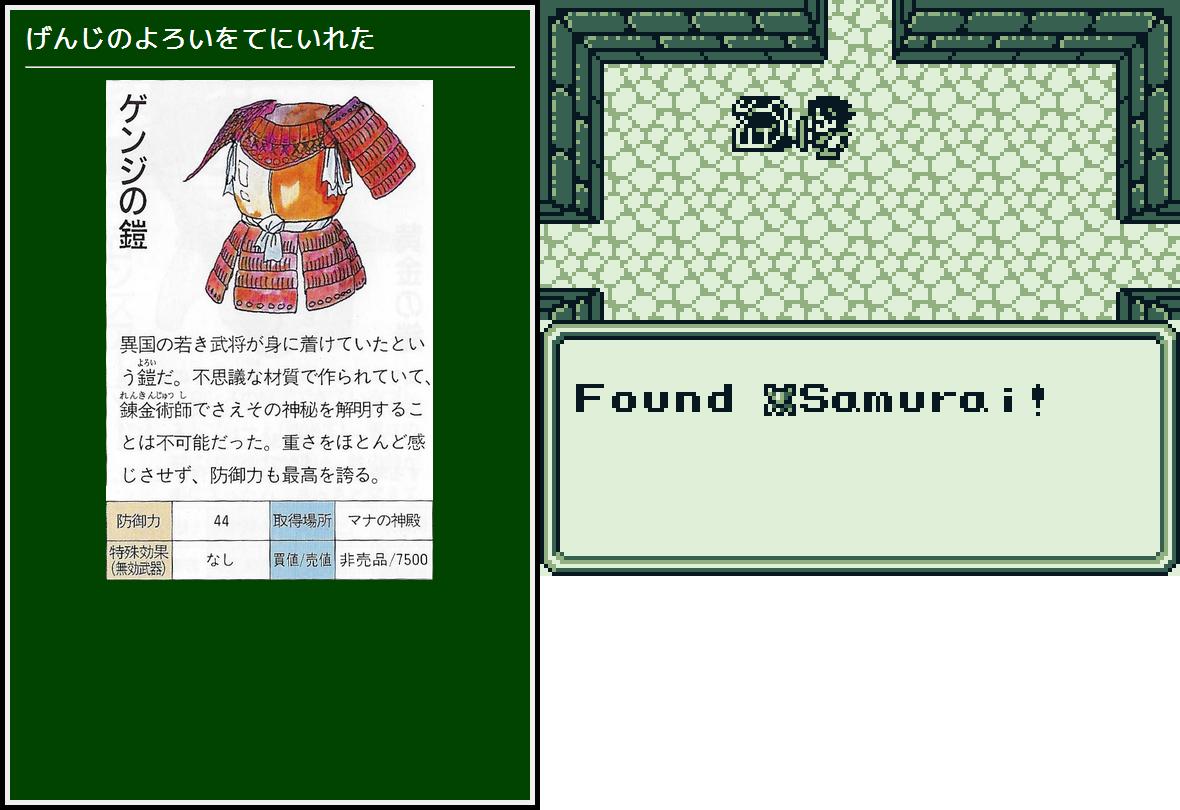
So what does this “Genji” thing even mean, and why was the name changed?
The very quick answer is that in Japanese history, the Genji clan (also known as the Minamoto clan) was one of the most powerful groups in the country, politically and militarily. As such, the “Genji” name evokes images of mighty warriors of times long past, among other things.
The Genji clan also passed down a famous set of family treasures known as the 源氏八領 (genji hachiryō), which consisted of eight suits of armor. Their whereabouts were lost after a major rebellion in the 1100s, so they’ve gained a sort of mythical status now.

This background information isn’t well known outside of Japan, which is why the localizers decided to change “Genji” equipment into “Samurai” equipment. By the mid 1990s, though, the company dropped this Genji-to-Samurai thing:
I think “Genji” has always been left as-is in every English Final Fantasy release since, but I could be wrong. If so, let me know!
Getting Hitched
The final area of the game takes place in a mysterious, magical area far above the rest of the world. Julius, the main villain, taunts the hero just before the final battle:
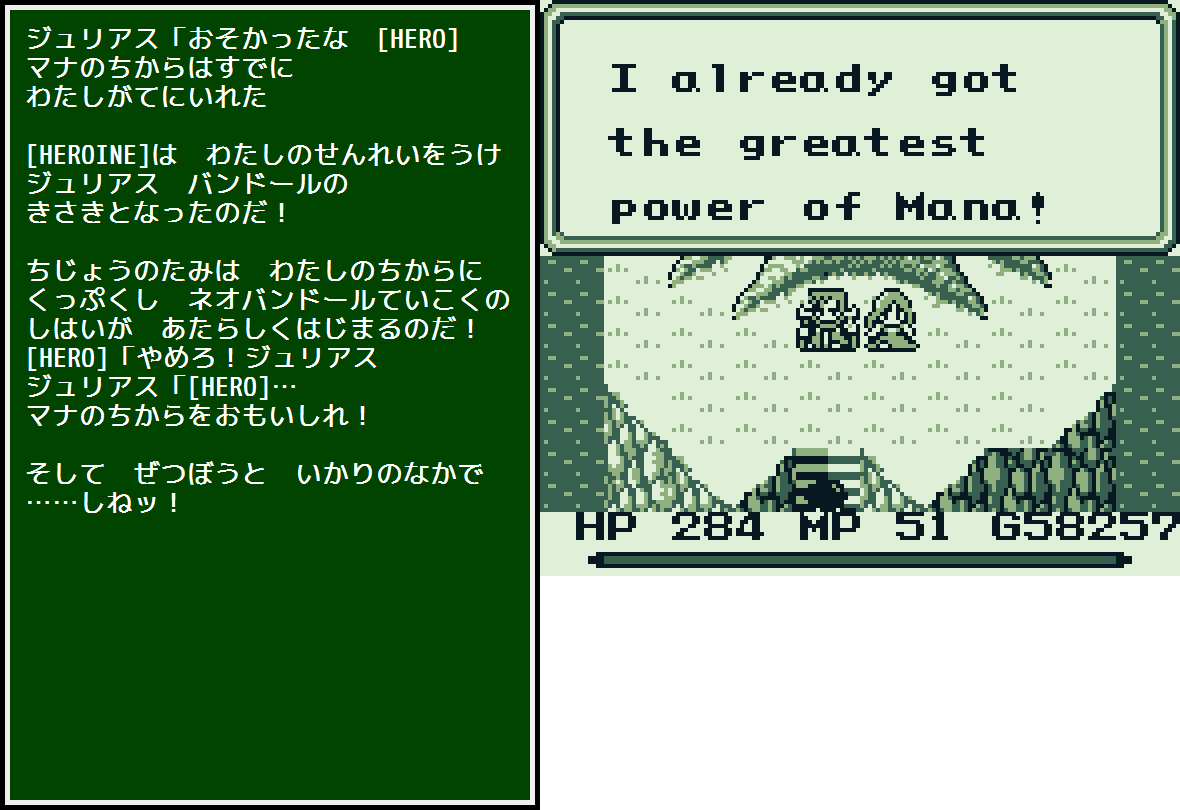
| Japanese Version (basic translation) | English Translation |
| Julius: You’re late, Hero. I have already obtained the power of Mana. | Julius: You’re late, HERO.. I already got the greatest power of Mana! |
| HEROINE has received my baptism and become Julius Vandole’s queen! | |
| The people who live below will bow down before my power, and the Neo-Vandole Empire shall rule anew! | The time has come for the Empire Neo-Vandole! |
| HERO: Stop, Julius! | |
| Julius: HERO… Now you will learn the power of Mana! | Now that I have the mighty power.. |
| And amid that despair and anger… you will die! | I do not need you anymore, HERO! |
In this short scene alone, we can see a number of changes: rephrased references to dying, missing religious text, simplified text, deleted text, and the like. But the biggest surprise is the part about the heroine being baptized and becoming the villain’s queen.
The word used in Japanese here is せんれい (senrei), which in this context doesn’t necessarily mean “baptize” in the Christian church sense, but just a similar ritual or ceremony of some sort. In fact, that’s how the translation of the 3D remake handles it:
I assume this line was cut from the original translation because of the religious connotation, and the part about the heroine becoming his queen was removed as part of that cut.
Someone in the chat during the stream was actually curious about the heroine marrying the villain, because the 3D remake’s translation talks about it while the original translation doesn’t:
I wonder why this was phrased this way, though – I feel like saying “too late for you, we had a ceremony and we’re married now” is much weaker and less distressing than “your former friend and last member of the hallowed and sacred Mana Family will now do my bidding and help me rule my evil empire”.
Ending Details
After the final battle, the Mana Tree is gone – but it turns out the tree was the heroine’s mother all along. Her mother explains the situation in detail and what responsibilities the hero and heroine must bear from now on.
Lots of little details during this scene changed during the jump from Japanese to English, so let’s look through most of it side-by-side.
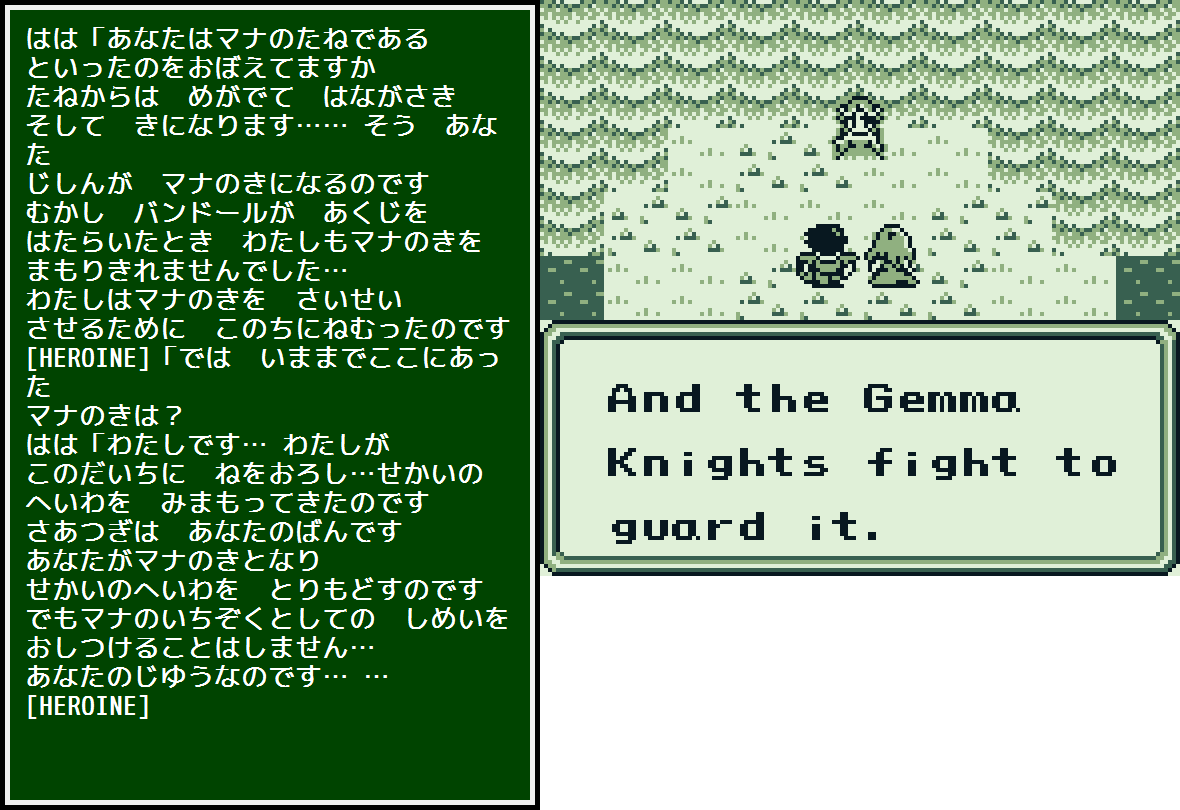
| Japanese Version (basic translation) | English Translation |
| The Mana Tree was lost… | The Mana Tree disappeared. |
| HERO: The Mana Tree… | HERO: Oh…… .. |
| HEROINE: I’m… not sure what to do… What am I supposed to do? | HEROINE: .. What am I supposed to do..? |
| “HEROINE… HEROINE… Calm yourself…” | HEROINE, my dear…… |
| HERO: ……? | |
| HEROINE: That voice… Mom? | HEROINE: …… Mom? |
| Mother: HEROINE. You mustn’t be disheartened… | Mother: Now that the Mana Tree is lost, we need.. a new gemma of the Mana Tree. |
| You were unable to fulfill your duty of protecting the Mana Tree. | |
| But you can simply become a new tree. | |
| HEROINE: New tree? | HEROINE: .. New tree? |
| Mother: Do you remember when I said that you are a Mana Seed? | Mother: Remember what I told you? |
| From the seed grows a bud that blossoms and becomes a tree. | We are the seeds of the Mana Tree. |
| Yes. You, yourself, will become the Mana Tree. | We will be a bud called Gemma and we become a tree. |
| Long ago, when Vandole was perpetrating evil, I, too, was unable to protect the Mana Tree. | And the Gemma Knights fight to guard it. |
| So I came to this land in order to regenerate the Mana Tree. | I became the Gemma last time we lost the Tree. |
| HEROINE: Then the Mana Tree that was here until just now… | HEROINE: That tree……? Was it you……? |
| Mother: It was I. | Mother: ..Yes, HEROINE. |
| I took root in this land and watched over the world’s peace. | |
| Now it is your turn. You must become the Mana Tree and restore peace to the world. | But.. you are the last member of us Mana Family. To preserve the Mana Tree, we need you to stay here and become the gemma. |
| But I cannot force this duty of the Mana Clan upon you… That decision is yours to make, HEROINE. | But.. HEROINE.. Nobody else can decide for your life but you.. |
That’s a lot of text, so here are some of specific points of interest:
- Several lines were cut from the English version, which is to be expected by this point.
- Most of the details of the mother’s own history are left out of the English translation.
- Similarly, the details of the heroine’s situation – including the reason she’s in this situation – are truncated.
- The core purpose of the Mana Tree, including why it’s so important that a new tree be made, is left out.
- Throughout the game, we’ve seen the term “Gemma Knight”, but only now, at the very end, do we learn what a “Gemma” even is. Surprisingly, the English script inserts these Gemma references out of nowhere when the Japanese script doesn’t mention it.
Basically, the details found in the Japanese version are stripped down to the core idea of “I was a tree, but now I’m gone, so you need to be the tree”.
The second half of this scene also has some interesting changes:
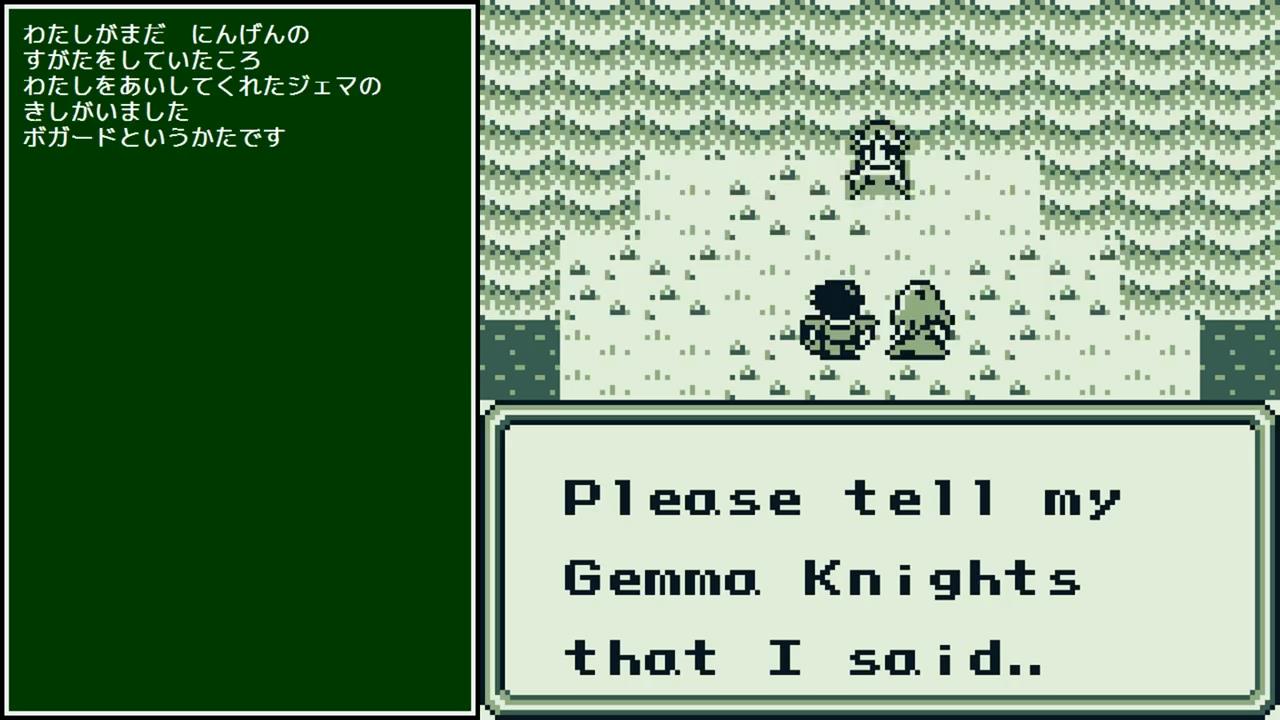
| Japanese Version (basic translation) | English Translation |
| HEROINE: …I understand. | HEROINE: I will, Mom. |
| The memories of Mana have fully revived inside of me just now. | |
| I am the last survivor of the Mana Clan… the last of the Mana Trees. | I will be the new Tree of Mana. |
| Should that tree ever wither, the world will come to an end… | But if I am the last one left, when I fall.. |
| _ | Mother: Yes.. That will be the end of the peace.. |
| All right, HERO. Hurry outside! | HEROINE: .. Bye.. HERO. Please go.. .. I must stay here.. |
| This place will soon sink into the ground… | |
| Please do not worry… Because although I will transform, I will continue to live here forever… | …… Don’t worry. I will be here as long as.. .. you guard me from the evil…… |
| Mother: HERO. You are a Jema Knight who wields the Holy Sword. | Mother: HERO…… Please guard my daughter. |
| Can you watch over the tree, so that it will never again be corrupted by evil? | You are the only Gemma Knight for the Tree now…… |
| HERO: I will… | |
| Mother: And I have one other request… Back when I still had my human form, there was a Jema Knight who loved me. His name is Bogard. If you happen to see him in the world below, please give him my regards. | Mother: I will be withering soon.. Please tell my Gemma Knights that I said.. good-bye and thanks to them. |
Here, we can see a few noteworthy differences. More text was completely cut out, and one line not found in the Japanese script was actually added in. More details were simplified or removed. But the biggest change involves the surprise revelation about the heroine’s mother and the previous Holy Sword hero, a character from earlier in the game.
That last part is such an intriguing bit of information that paints previous events in the game in a new light, plus it gives satisfying closure to the previous Mana Tree story. It also lends the ending a poetic “and so history repeats itself”/”passing the torch to the next generation” vibe. It’s neat, and I’m not really sure why this line changed so drastically in the translation. It was kept intact in the translation for the 3D remake, however:
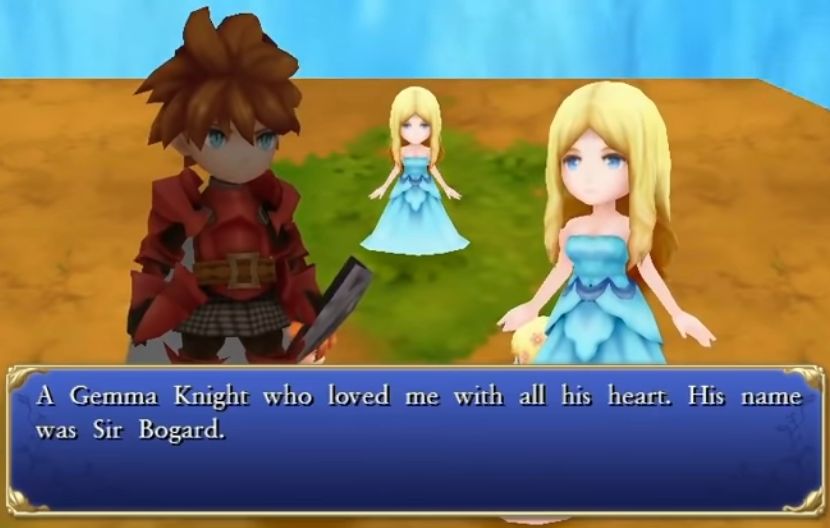
As always, I feel a lot of these changes are minor, but add up to the point that Japanese players and Western players probably experienced the game’s story in somewhat different ways.
Final Thoughts

Looking back, it’s clear that Seiken Densetsu/Final Fantasy Adventure could definitely benefit from a fresh translation today. I would point to the 2003 Game Boy Advance remake, Sword of Mana, but I feel it’s so different that it’s basically an entirely different game of its own. Luckily, the 3D remake is closer to the original game and was given a new translation, so that’s an option if you want to play the game with a better translation.
Of course, despite all of its localization flaws, Final Fantasy Adventure was still very fun and memorable for me when it was released, and I still feel that way about it now.
Extra Resources
Here are a bunch of my files and stuff that I used while putting this comparison project together. Hopefully they’ll prove useful to someone somewhere someday!
- Spreadsheet of Japanese text and English text side-by-side – you can even add notes of your own!
- All kinds of technical notes, text dumps, data files, and more that I used to create this comparison and develop my custom Wanderbar plugin
I’ll also share my new Game Boy/Game Boy Color/Game Boy Advance Wanderbar with my Final Fantasy Adventure plugin in the near future!


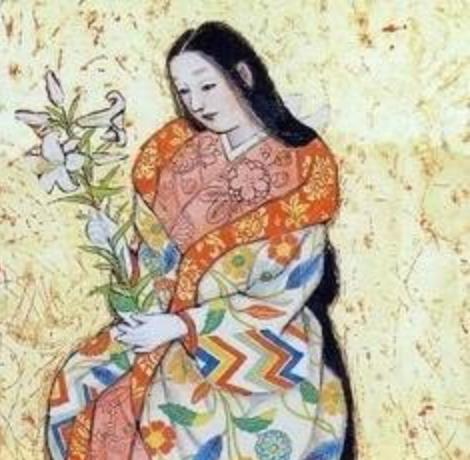
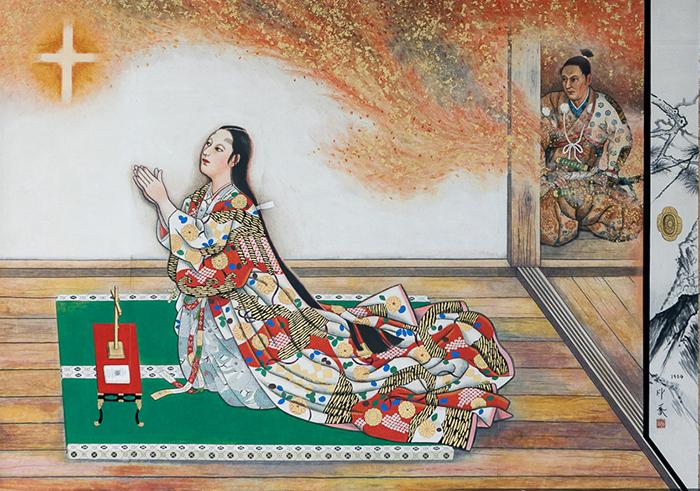
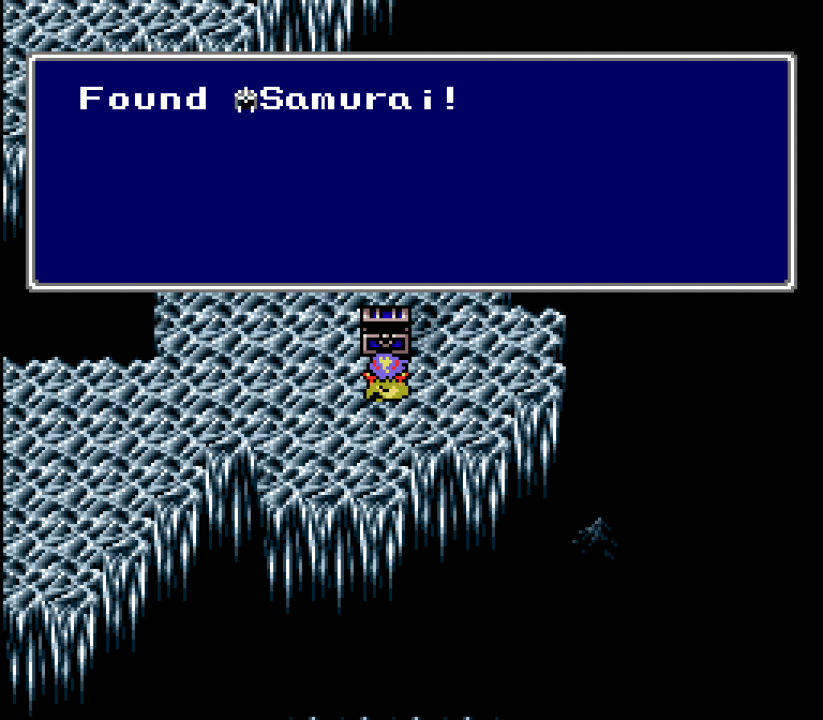


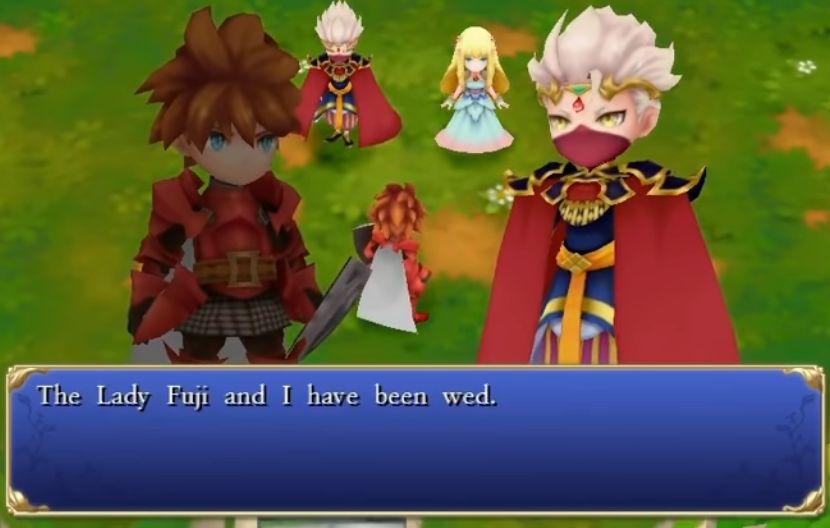
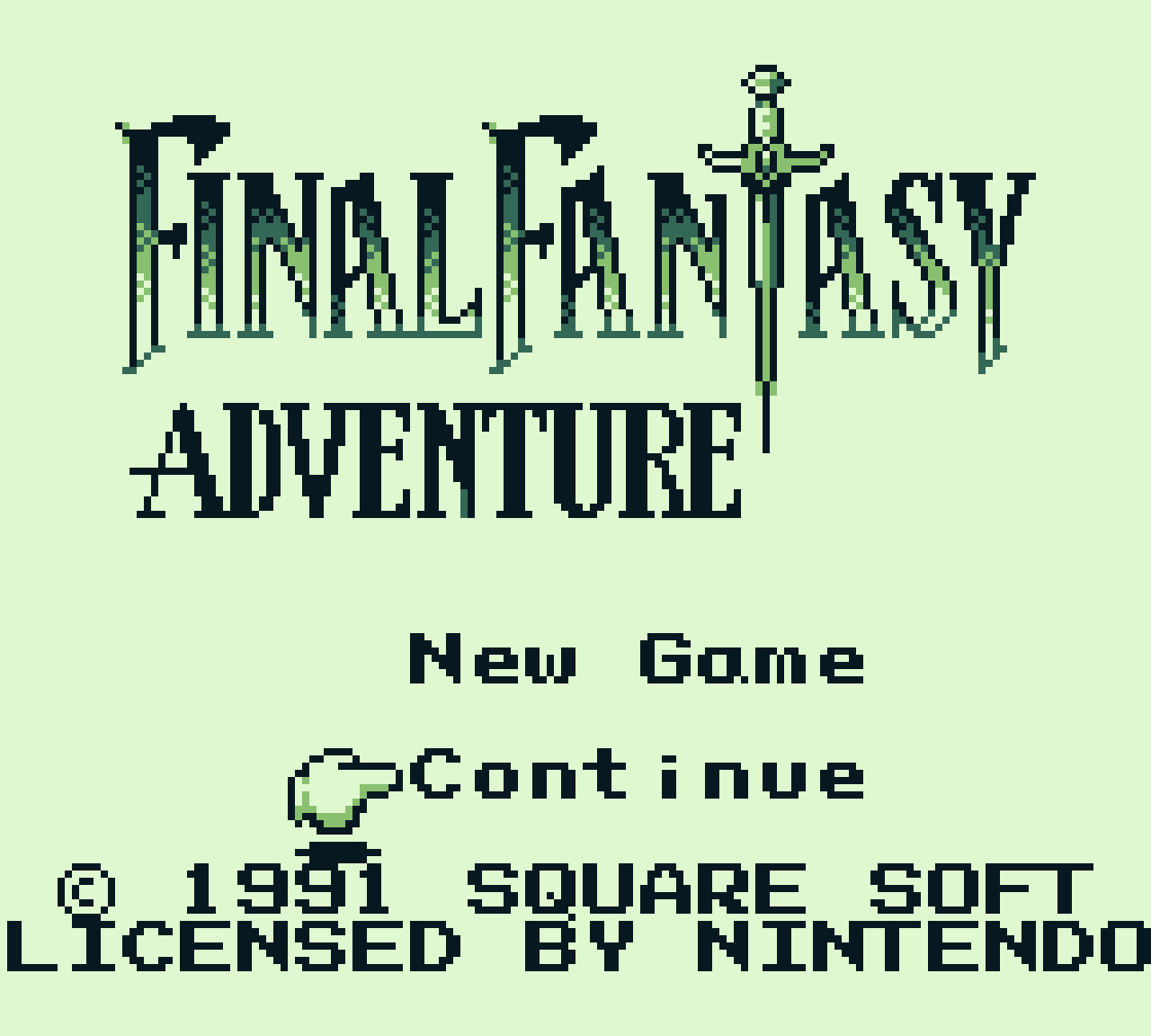

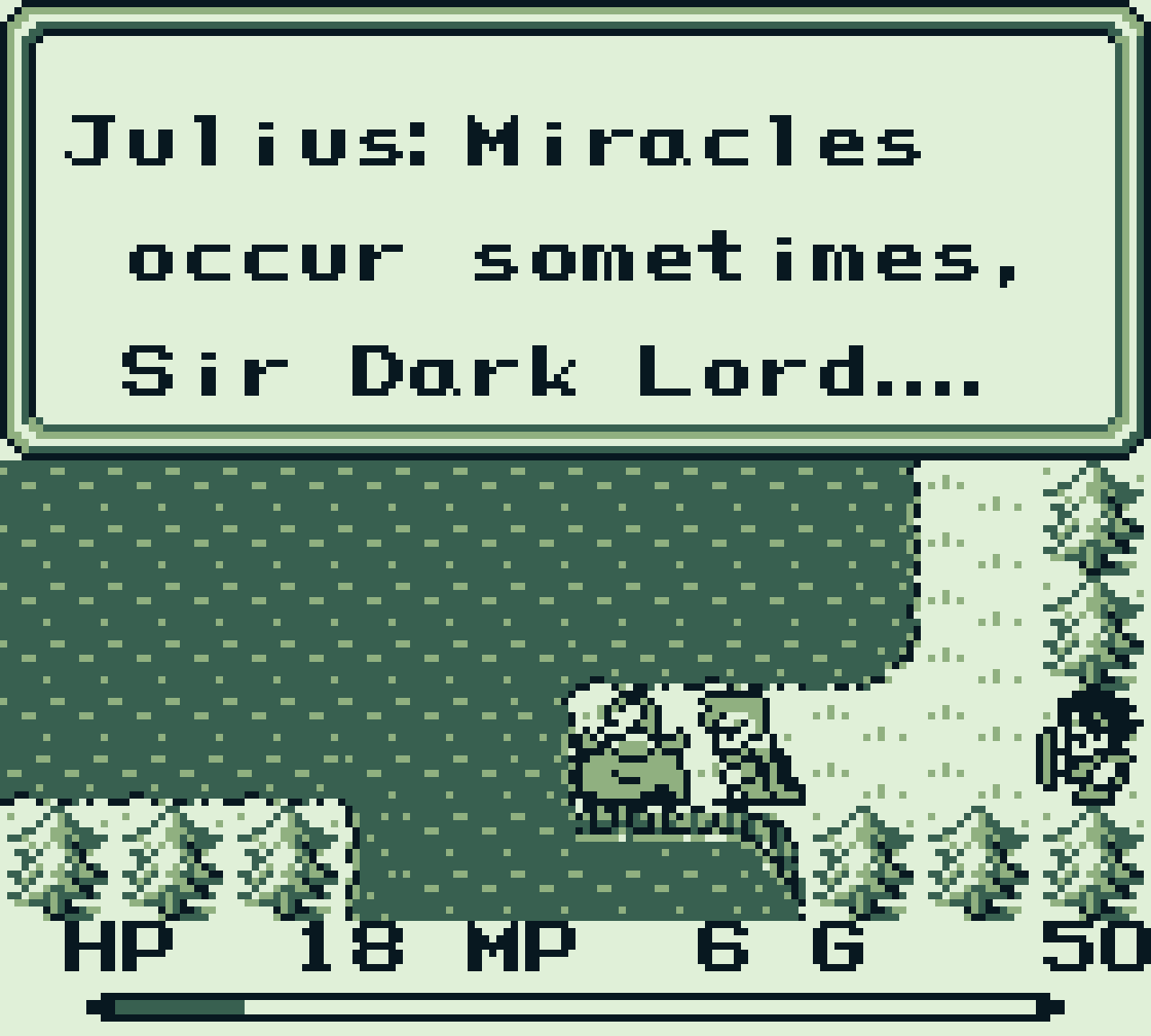
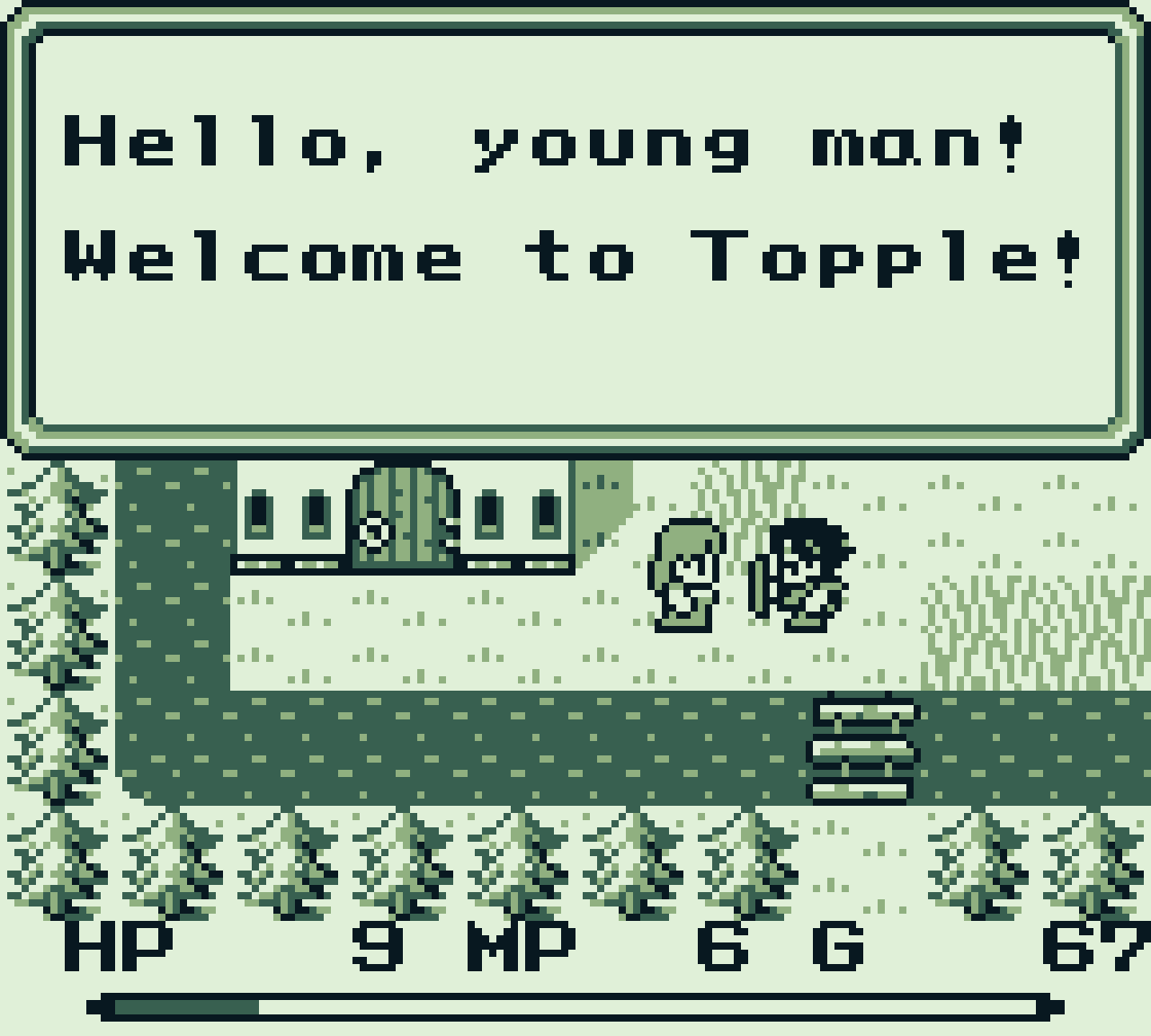
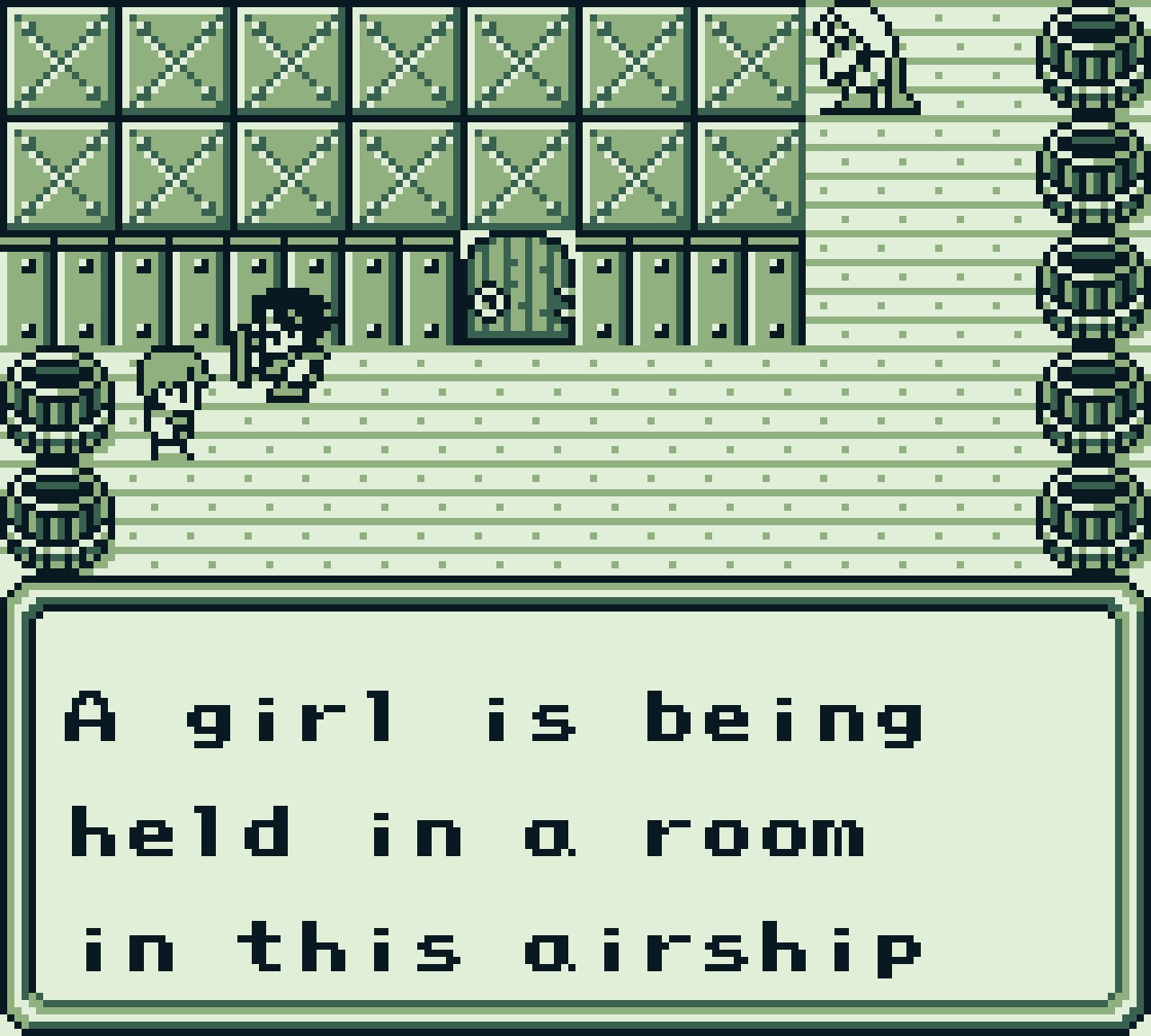
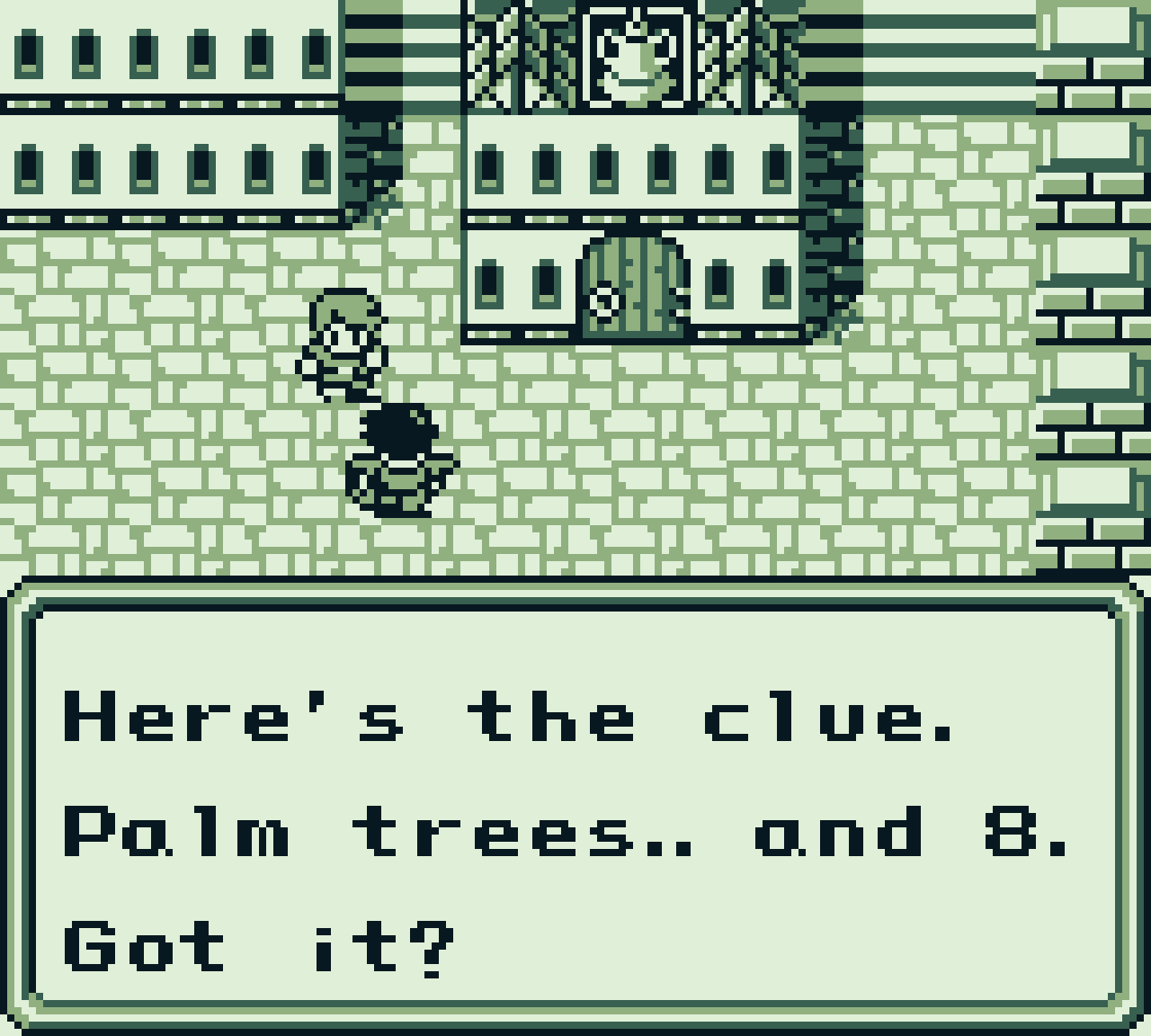
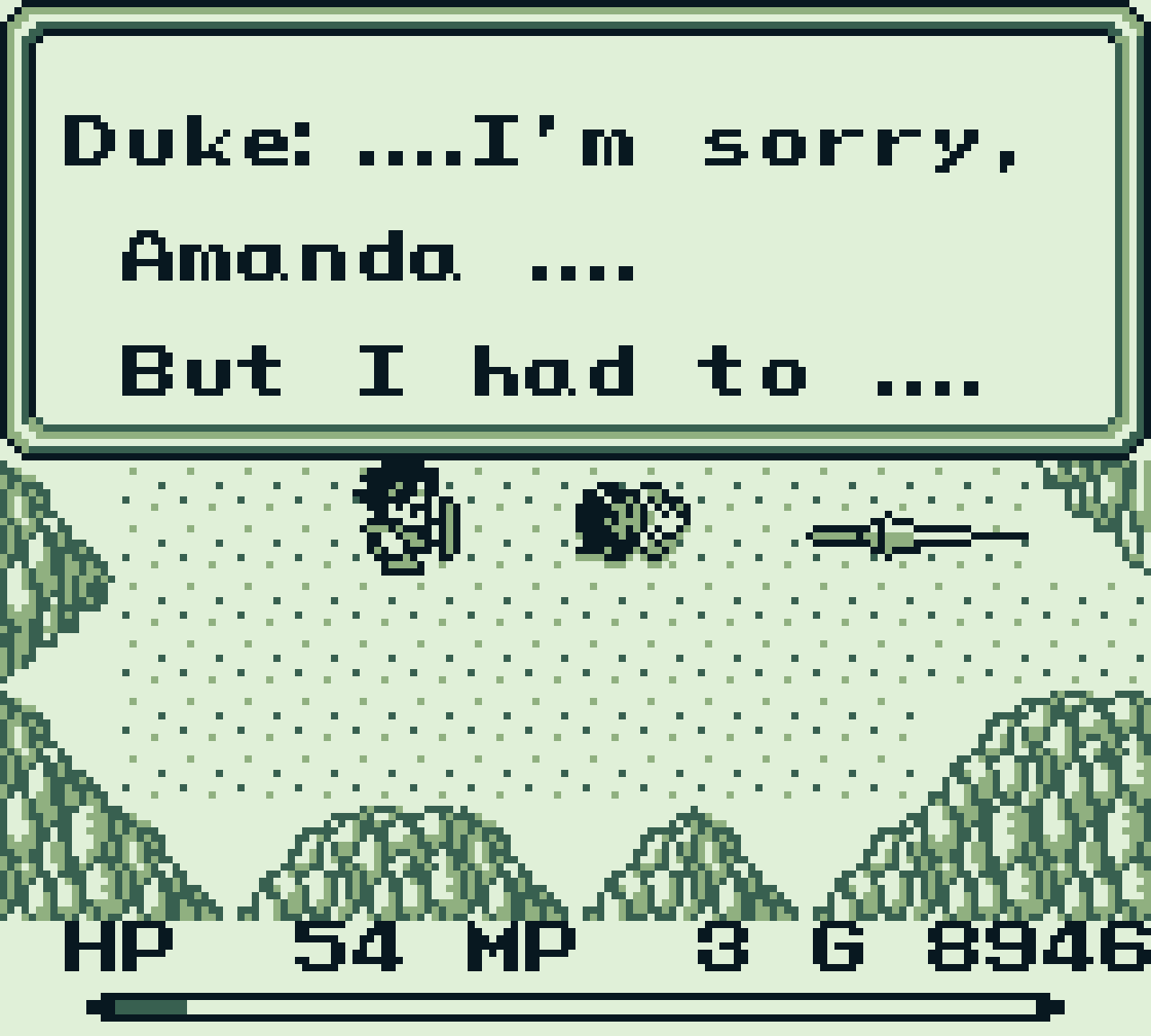
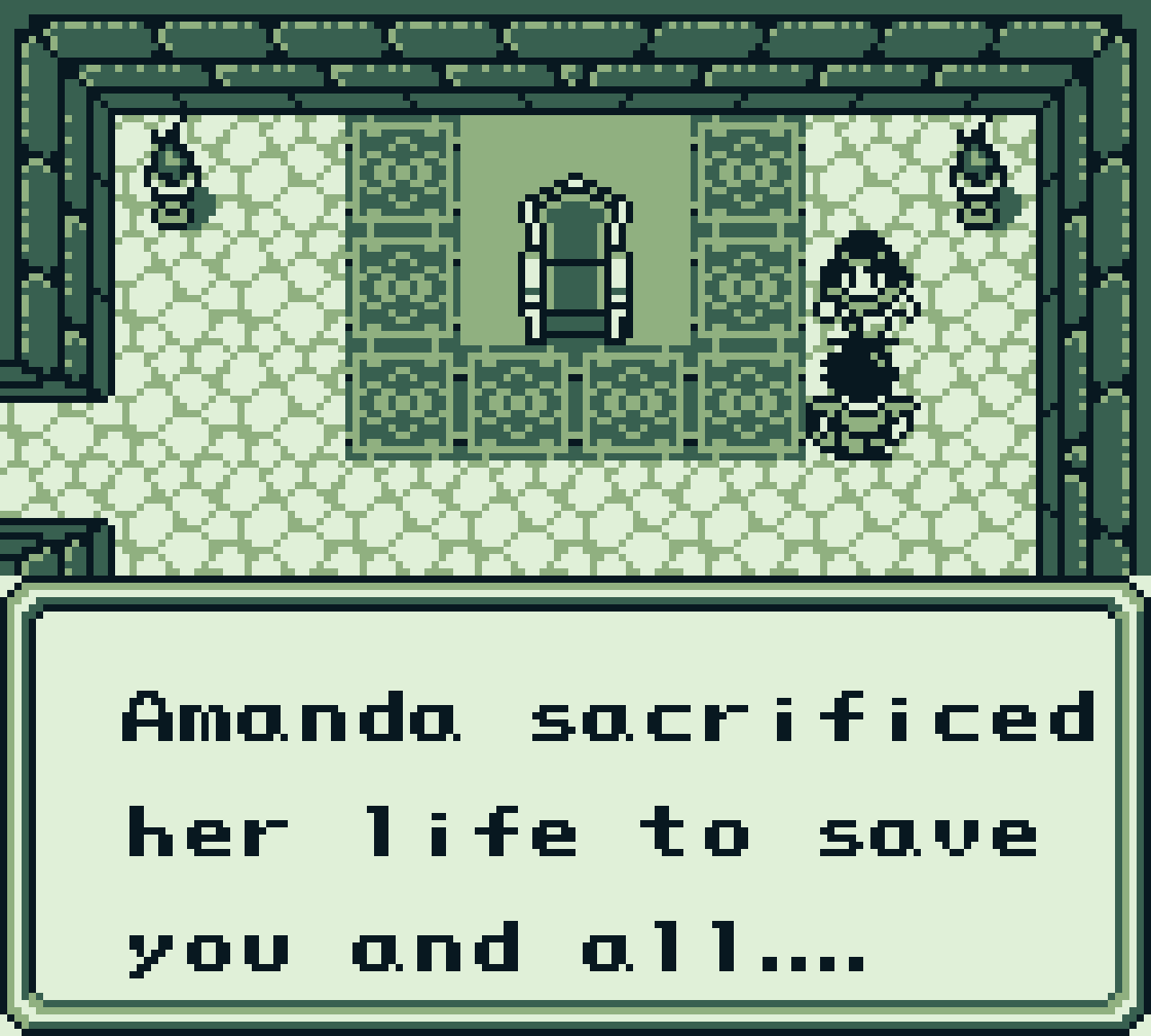
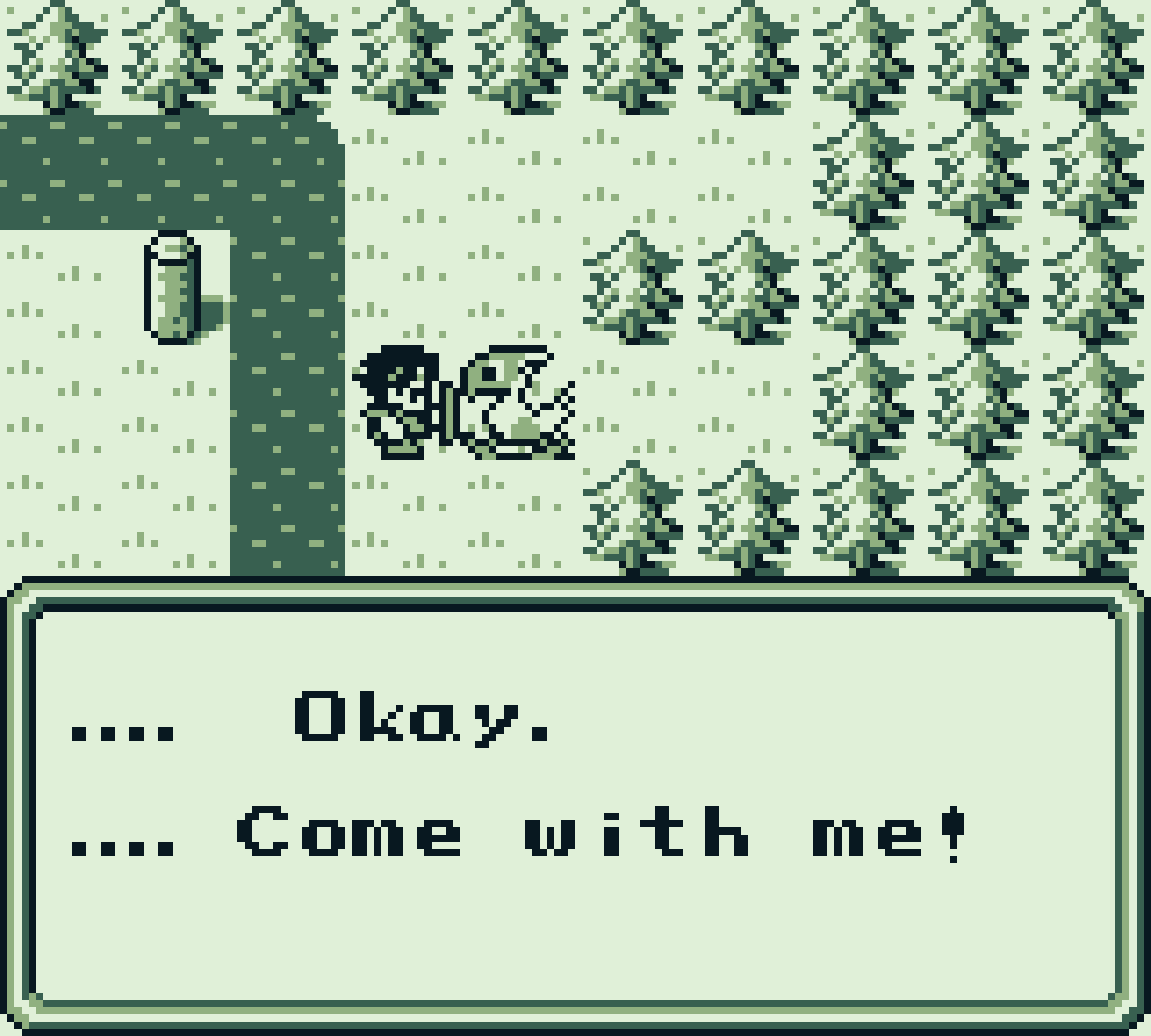

![press start to translate [Final Fantasy IV] press start to translate [Final Fantasy IV]](https://legendsoflocalization.com/wp-content/uploads/2019/08/bbenma.png)
Do you think the robot’s speech is unnatural enough that having it talk in ROBOT VOICE in the English was reasonable?
At a glance, it doesn’t talk in all katakana or anything obviously unnatural like that. It does seem like it drops particles and verbs in its dialog quite a bit, though, and might emphasize individual words in katakana a bit more than usual. But I’m not sure how different that is from the overall writing style of the game.
Yeah, the all-caps robot talk seems okay to me, the original Japanese text sometimes suddenly jumps between the two kana styles, which gives it an unnatural feeling.
Yeah a new translation of FF Adventure and Secret of Mana would have been nice. Still, its a miracle Square actually translated Seiken Densetsu 3 into English, so maybe that would have been asking too much.
Man, I wonder what they would have charged if they translated and reprogrammed three games instead of just one.
They did, just not all at once.
Yes, but the context was that two would have to be done again, and would cosy much more money to do as opposed just making sure the completed ROMs they already had ran in their emulator.
I thought the price was fairly reasonable for essentially (in terms of translation and reprogramming) a new game plus two untouched old ones, but not everyone agrees.
I mean I would have rather gotten the remakes ported to Switch instead of cheap ROMs slapped together into an emulator. I’m a huge Secret of Mana fan and I’m NOT buying Collection of Mana because it doesn’t offer me anything I actually want — I have the originals AND the 3D remakes already so it wouldn’t give me anything meaningful except for the translation of SD3, and I’d rather just wait to play the remake.
That said, I’m not as bitter about it as the above suggests. A little disappointed, but certainly not upset.
We’ve gotten a new translation of Secret of Mana. It came out on PS4.
Now, if you mean patching the new translation into the SNES game… well, that seems like effort that wouldn’t really be profitable.
Seeing Gemma as Jema made me wonder whether Gemma Knight might just possibly be intended as a play on Jedi Knight…
I remember thinking that when I first played Secret of Mana, where it’s spelled as “Jema” instead of “Gemma.”
I don’t think the “peace will end” line is new to the English translation, but rather a piece of the ongoing bowdlerization of the game — as a way to hide the reference made in the Japanese version to the world ending. (Which would, of course, involve countless instances of people dying.) The only thing really novel relative to the Japanese text was that it was the mother saying it instead of the heroine.
Speaking of Mana titles not getting new translations, what seems to be an even worse case of this is that both the iOS port of Secret of Mana as well as its 3D remake both still use the SNES version’s tired out translation. The only new material that has better writing is the inn chat scenes in the remake, because that was the only new material they had to actually translate. I just don’t get why Square Enix was too damn lazy to retranslate the whole game, especially considering they have the resources. Thanks to that, I feel like the only game where the lore of Fa’diel made any coherent sense was Legend of Mana. As a result, I feel like those of us overseas Mana fans are still missing out on a lot of the background details.
That’s… not true. I mean, yeah, the iOS version was sort of a minimum-effort hack, and it shows. But the 3D remake on PS4 was a new retranslation. They might have referred back to the SNES translation in the process, but it’s definitely not the same script. It’s quite a bit better.
Are you sure? Because a lot of it just copies the old script for major story points (the cutscenes where they use voice acting such as when hypnotized Dyluck drains Primm’s life energy) and uses quite a bit of the simple sentences the SNES version did.
As I said, I think they referred back to the SNES translation. They may have even used it as a starting point. But for example, here’s the first snippet I was able to find for comparison:
Original:
Here at last! The legendary knight!
..?
You don’t think we have legends here like everywhere else?!
Riding a white dragon, and / wielding The Sword, they / shall save the world…
That’s you guys, right? I knew it right away! Just yesterday one of my people saw a white dragon fighting a huge snake! Use the 1st floor exit on the right for the cave.
Palace? I know where it is, but first find the cave! Then I’ll tell you how to reach the palace! Oh, and there’s something upstairs for you!
Remake:
It’s you! You’re here at long last! Nice to meet you, legendary hero!
Huh?
You think we don’t know the legends up here?
A hero of great might with sword upon shoulder, / he rides upon the wings of a white dragon / and so shall save the world.
That’s you guys, right? I recognized you right away!
Just yesterday one of my people saw a white dragon fighting a huge snake in the cave north of here! Sounds like the prophecy hit the nail on the head! Use the first floor exit on the right to get to the cave!
The palace? Yeah, I know where it is, but the prophecy says that you find the cave first!
So obviously they’re working from the same basic material, and some of the phrasing similarities are pretty telling that the SNES translation was involved, but it’s also pretty clearly not a direct copy-paste.
Aw dang, I forgot that the comments eat HTML tags, so the IRC-style dialogue I used got eaten. That’s all King Truffle talking, except for the “..?” / “Huh?” which is Randi.
Personally, I think they should have retranslated it from scratch, to better match the Japanese script. There are a lot of unique lore details that have remained excised since the SNES version and the story is still a little too simple without them.
I mean, even in Japanese there’s a lot of lore that got lost and a lot of rough edges. It was kinda rushed near the end of its development cycle and it had to get cut down to fit on a 2MB cartridge instead of a 650MB CD. Doing it RIGHT would involve not just retranslating from the Japanese script, but fleshing out the bits that were left over when chunks were carved out.
And let’s be honest: The PS4 remake was still a pretty low-effort project. The maps are all lifted straight from the SNES version even when it would have made sense to change it for the new style, and the animations tend to be limited.
So yes, I agree, a full retranslation from scratch, just keeping around the original SNES translation enough to preserve the parts that people actually liked (this is a common problem with retranslations — iconic scenes get screwed up because the new translators didn’t care about the old one) would have been nice. But what we DID get was better than what we had before, and I don’t want to send a message to Square that keeping stuff in the vault forever is better than keeping great games accessible to modern audiences.
Yes, but the Japanese script, cut down though it was, still had additional details about things like the Mana Tribe, the Mana Goddess, and the legendary sword. At least their version of the story wasn’t lacking proper details in most areas. I would love to see Secret of Mana done right, but after the PS4 remake debacle, I doubt Square will be touching it again.
I agree that the PS4 remake really was a lackluster effort. While the voice acting added some character to the cast and the inn chats gave the main trio some more personality, everything else was a slapdash effort. I deleted it after completing it because I was sick of how mediocre it was. At least Trials of Mana’s remake looks to be a much better effort, but we’ll see next year.
The first thing I thought of when I saw “garasha” was a mix between “karasu” and “geisha.” It would certainly fit, for a bird dressed in a kimono. The whole thing kind of makes me think of tengu.
Ain’t garasha a pun with karasu and hosokawa gurashia?
Something interesting to note on this is that, if you try to leave Dime Tower via backtracking, you get an extra bit of dialogue. I’m sure it’s at the exact entrance, but it’ll say “The tower is already getting buried. I can’t get out from here!” That’s quite some foresight from the devs to implement that, as if they knew someone would be that stubborn enough to backtrack.